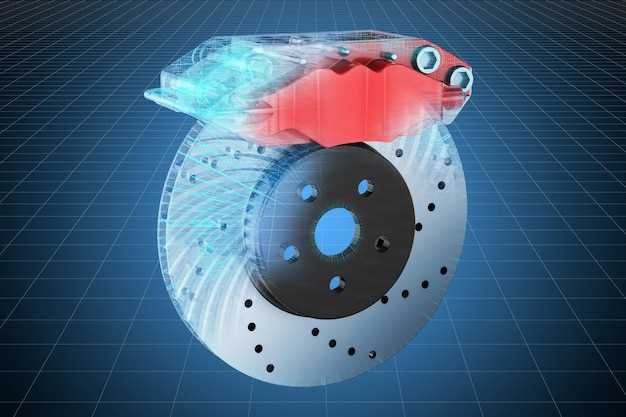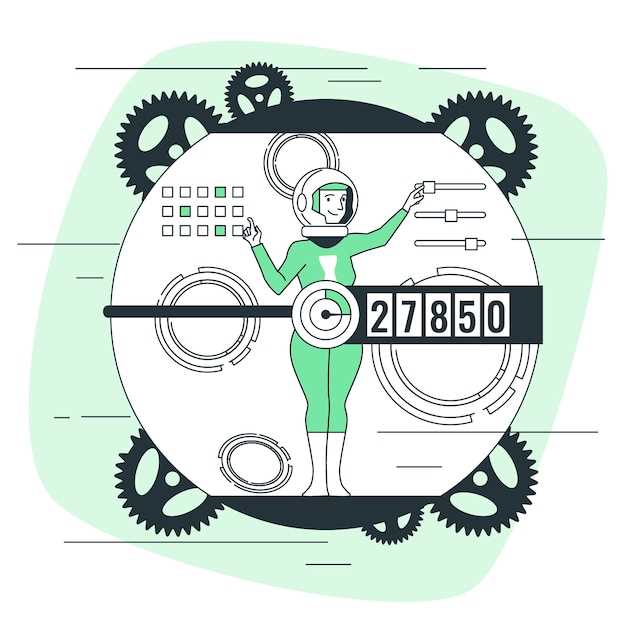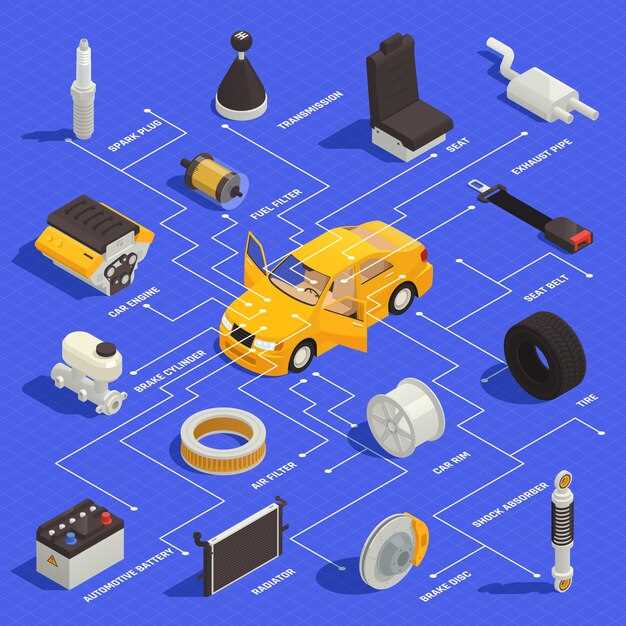
The automotive industry has witnessed a remarkable evolution in transmission technology, with Dual-Clutch Transmission (DCT) emerging as a game-changer in achieving optimal performance and efficiency. DCT combines the benefits of both automatic and manual gearboxes, offering seamless gear shifts and improved acceleration. This innovative transmission system utilizes two separate clutches, allowing for pre-selection of gears while the vehicle is in motion, ultimately enhancing the driving experience.
DCT operates by using one clutch for odd-numbered gears and the other for even-numbered gears. This arrangement enables the transmission to maintain a higher speed during shifts, as the next gear is already engaged through the corresponding clutch. When drivers demand a change in speed, the transition occurs with minimal interruption, resulting in quicker acceleration and reduced power loss. Consequently, understanding the mechanics behind DCT is crucial for anyone interested in performance vehicles or modern automotive engineering.
At the core of DCT technology lies the integration of electronic control systems that manage gear shifts based on driving conditions and driver inputs. This level of sophistication ensures optimal gear engagement and can adapt to varying road scenarios, making it an ideal choice for both everyday driving and high-performance applications. By delving into the intricacies of dual-clutch mechanics, enthusiasts and engineers alike can appreciate the significant advancements in speed and efficiency that this transmission technology offers.
How Dual-Clutch Transmission Works in Modern Vehicles

Dual-clutch transmission (DCT) is an innovative gearbox technology that enables faster gear shifting and improved vehicle performance. Unlike traditional automatic transmissions, which use a torque converter, DCT employs two separate clutches to manage two input shafts. This design allows for quick engagement and disengagement of gears, significantly enhancing acceleration and driving experience.
The operation of a DCT can be broken down into two main components: predetermined gear selection and seamless shifts. As one clutch engages a gear, the second clutch pre-selects the next gear. This means that when the driver accelerates, the next gear is already prepared for engagement, eliminating the delay typically associated with shifting.
When a driver accelerates, the DCT effectively alternates between the two clutches. For instance, if the vehicle is in first gear, clutch one will be engaged while clutch two will ready the second gear. As the vehicle reaches optimal speed, the transition from one gear to another occurs instantaneously, which translates to smoother acceleration. This system not only heightens performance but also contributes to fuel economy by maintaining an efficient power band.
Moreover, DCTs can be configured for various driving modes, adapting to the driver’s preferences or road conditions. In higher-performance vehicles, the DCT can be calibrated for rapid gear changes, which is crucial during high-speed maneuvers. Conversely, in standard driving conditions, it may prioritize comfort and efficiency.
In summary, dual-clutch transmissions revolutionize how power is delivered in modern vehicles by combining the efficiency of a manual transmission with the convenience of an automatic. Their ability to execute rapid shifts while optimizing speed results in a driving experience that is both dynamic and enjoyable.
Comparison of DCT with Traditional Automatic and Manual Transmissions
Dual-clutch transmissions (DCT) are designed to offer performance advantages over both traditional automatic and manual transmissions. One of the key benefits of DCT is the speed of gear shifts. Unlike traditional automatic transmissions which use a torque converter, DCTs employ two separate clutches, allowing for pre-selection of the next gear. This results in rapid shifts that can be executed within milliseconds, significantly enhancing the driving experience.
In contrast, traditional automatic transmissions utilize hydraulic systems for shifting, which can introduce lag due to the time taken to engage the torque converter and change gears. Manual transmissions, while providing direct driver control, typically require more physical effort and may not match the speed of shifts that modern DCTs offer.
The table below summarizes the key features of each transmission type in terms of speed and shift performance:
| Transmission Type | Shift Speed | Driver Control | Efficiency |
|---|---|---|---|
| Dual-Clutch Transmission (DCT) | Extremely Fast | Moderate | High |
| Traditional Automatic Transmission | Moderate | Low | Moderate |
| Manual Transmission | Variable (dependent on driver skill) | High | High |
In summary, while DCTs provide the advantage of speed and quick shifts, traditional automatics focus on ease of use, and manuals prioritize driver engagement. Choosing the right type of transmission depends on individual priorities such as performance, convenience, and driving style.
The Role of Clutches in Shift Speed and Gear Engagement

In dual-clutch transmissions (DCT), clutches play a crucial role in controlling shift speed and ensuring seamless gear engagement. The DCT configuration utilizes two separate clutches, each responsible for different sets of gears–one clutch for the odd-numbered gears and the other for the even-numbered ones. This arrangement allows for pre-selection of gears, enabling faster shifts compared to traditional automatic transmissions.
When the driver demands a shift, the DCT engages the pre-selected gear through one of the clutches while simultaneously releasing the current gear via the other clutch. This process significantly reduces the time between shifts, enhancing both performance and acceleration. The rapid engagement and disengagement of the clutches optimize the power delivery from the engine to the wheels, contributing to a smoother driving experience.
Furthermore, the efficiency of clutches in a DCT impacts the overall responsiveness of the vehicle. Advanced software algorithms manage the clutch operation, ensuring that shifts occur at the most opportune moments, which can vary depending on driving conditions and driver input. This intelligent control leads to improved speed and performance, making DCT a popular choice among sportier vehicles.
In summary, the clutches in dual-clutch transmission systems are pivotal to achieving quick shift speeds and effective gear engagement. Their design allows for a unique strategy that leverages dual clutches, ensuring that power is always optimally transmitted during gear changes, resulting in enhanced vehicle dynamics and driver satisfaction.
Key Advantages of Using Dual-Clutch Transmission in Performance Cars
Dual-Clutch Transmission (DCT) has emerged as a popular choice in performance cars due to its exceptional mechanics and efficiency. One of the primary advantages of DCT is its ability to offer lightning-fast gear shifts. This speed translates to improved acceleration, allowing drivers to experience quicker response times, which is crucial in competitive racing and spirited driving scenarios.
Another significant benefit of DCT is its seamless power delivery. The system utilizes two separate clutches for odd and even gears, enabling one clutch to engage while the other is pre-emptively prepared for the next shift. This dual setup minimizes the power loss that typically occurs during gear changes, ensuring that the engine remains in its optimal power band, enhancing overall performance.
Moreover, DCT provides better fuel efficiency compared to traditional automatic transmissions. By executing precise and rapid shifts, the transmission helps maintain engine efficiency, which is particularly beneficial in high-performance scenarios where conserving fuel can be as important as maximizing speed.
Additionally, DCT systems are often designed with advanced technological integration, allowing for customizable driving modes. This feature enables drivers to switch between relaxed cruising and aggressive performance with ease, adapting the car’s response to their driving style and conditions.
Lastly, the overall weight reduction associated with DCT design contributes to improved handling dynamics. The compact nature of dual-clutch systems enables manufacturers to achieve a more balanced weight distribution in performance cars, enhancing agility and control during high-speed maneuvers.
In summary, the advantages of using Dual-Clutch Transmission in performance cars are evident. With unparalleled speed in gear shifts, seamless power transfer, improved fuel efficiency, adaptable driving modes, and reduced weight, DCT systems stand out as a prime choice for enthusiasts seeking the utmost in driving performance.
Maintenance Tips for Optimizing Dual-Clutch Transmission Longevity
To ensure that your dual-clutch transmission (DCT) remains in optimal condition and functions smoothly over time, it is essential to follow a structured maintenance routine. Here are some important tips to keep in mind:
- Regular Fluid Changes: DCTs require specific transmission fluids to operate efficiently. Check your vehicle’s manual for the recommended fluid change intervals. Regularly replacing the fluid helps maintain proper lubrication and cooling.
- Monitor Fluid Levels: Keep an eye on the transmission fluid level. Low fluid can lead to overheating and operational issues. Ensure to top up your DCT fluid when necessary.
- Adaptive Learning Reset: Many modern DCTs have adaptive learning capabilities that adjust shift patterns based on driving habits. If you notice erratic shifting, consider resetting the adaptive settings per manufacturer guidelines.
In addition to fluid maintenance, the following practices can help prolong the life of your DCT:
- Avoid Aggressive Driving: Quick accelerations and hard braking can put unnecessary strain on the transmission. Aim for smooth and gradual shifts to minimize wear.
- Limit Stop-and-Go Driving: Frequent stopping and starting, particularly in heavy traffic, can wear out the dual-clutch components. If possible, utilize alternative routes to reduce such conditions.
- Utilize the Manual Mode: In situations where more control is needed, consider using manual mode to select shifts manually. This can reduce wear compared to automatic shifting in certain driving conditions.
Regular inspection of the DCT system is equally crucial:
- Schedule Professional Inspections: Have your dual-clutch transmission inspected by a qualified technician at recommended intervals. They can identify early signs of potential issues before they escalate.
- Check for Diagnostic Trouble Codes: Use a diagnostic tool to periodically check for DTCs related to the transmission. Early detection allows for timely intervention.
Incorporating these maintenance tips into your routine will help ensure that your dual-clutch transmission continues to perform well, providing smooth and efficient shifts for many miles ahead.
Future Developments and Trends in Dual-Clutch Transmission Technology
The evolution of dual-clutch transmission (DCT) technology is poised to take significant strides in the coming years. As automotive manufacturers continue to seek enhancements in vehicle performance and efficiency, the demand for faster and more responsive shift mechanisms drives innovation in DCT systems.
Advanced Materials and Design are essential for future DCT developments. The incorporation of lighter and more durable materials can reduce overall weight, allowing for improvements in both fuel efficiency and acceleration speed. Innovations in the design of clutches and gear sets will facilitate quicker engagement, minimizing shift times and enhancing driver experience.
Integration with Hybrid and Electric Vehicles represents another critical trend. As the automotive industry shifts towards electrification, dual-clutch systems are being adapted to work seamlessly with electric powertrains. This integration not only optimizes the shift dynamics but also maximizes energy efficiency, catering to the growing market for hybrid and fully electric vehicles.
Software Advancements are also crucial in shaping the future of DCT technology. Algorithms designed to predict driver behavior and adjust shift patterns accordingly will lead to improved overall performance. Real-time data processing enables systems to optimize shift timing, resulting in smoother transitions and enhanced speed during acceleration.
Furthermore, the trend towards automation is influencing DCT systems. With the rise of autonomous driving technology, dual-clutch transmissions are likely to evolve to further enhance their coordination with advanced driver-assistance systems (ADAS). This synergy will ensure that shifts occur with precision, contributing to a seamless driving experience.
In summary, the future of dual-clutch transmission technology is focused on achieving unparalleled shift speed and efficiency. Continuous advancements in material science, software development, and integration with emerging automotive technologies will define the next generation of DCT systems, keeping them at the forefront of modern vehicle performance.
